Writing has always been a powerful way to share ideas and thoughts. But in today’s digital world, blogging has taken over the role of traditional pen and paper. When blogging started in 1994, it served as a personal diary, where people shared their opinions and feelings on various topics.
Now, blogging has evolved to become a trusted and profitable medium to reach all kinds of audiences—individuals, businesses, companies, and so on. As a business, if you really need to optimize blogs, it is imperative to know what is a blog, why blogs are important, and how blogs can enhance user experience.
What is a blog?
A blog is a type of website where people share information, thoughts, or stories in the form of written posts. It is a digital platform where content, often focused on specific topics or interests, is shared with an audience in a structured, reverse chronological order. It serves as a medium for individuals, businesses, or organizations to express ideas, share expertise, or provide valuable insights.
Blogs can stand alone as independent websites or complement an existing site to enhance its content strategy. They play a crucial role in driving website traffic, building authority, and engaging audiences. Successful blogging involves consistent publishing, thoughtful content planning, audience interaction, and optimization to maximize its reach and impact.
Unlock higher rankings, quality traffic, and increased conversions through tailored award-winning SEO strategies. Elevate your web presence
by Infidigit’s SEO solutions. Unlock higher rankings, quality traffic, and increased conversions through tailored award-winning SEO strategies.![]()
![]()
Why Do You Need a Blog? Importance of Blogs
To completely understand the benefits of blogs, whether you are a business or an individual entity, the first step is to understand why is it important to have a blog.
In today’s hyper-digital world, getting noticed for your passion or building your venture requires you to have an active online presence. And a blog is one of the best ways to do that. Blogging ensures that your ideas and opinions gain visibility on search engines and that your target audience finds you.
This becomes more crucial if you are using a blog to promote your business or service. Blogging can get your niche customers to notice you, generate organic leads, and drive more income your way.
- Help your business to rank on SERPs
Businesses use blogs to boost their SERP rankings. Employing various SEO tactics on blogs with periodic updates can send a signal to search engine algorithms about the relevance and authority of your website content. Even tactics like paid ads on blogs can help your company’s homepage gain higher rankings.
- Share information about a particular topic
To make an impactful online presence, subject matter expertise is required. For instance, if you are a fashion brand, having a blog about a particular topic that shines an informative light on relevant trends or any particular topic will help you bring a lot of visitors to your website looking for that information.
- Attract users to your website
You can only bring so much traffic to your main landing pages. While landing pages are critical for conversions, they usually would not be able to capture the top-of-the-funnel traffic to your website. A blog can be a helpful resource in bringing visitors to your website, even if they are not yet interested in purchasing your products or services. Running an informative and engaging blog can help spread brand awareness and attract untapped users to visit your website.
Structure of a Blog
1. Title
The Title is one of the most important parts of the blog post, as it’s the first thing readers see. It should:
- Be Clear: Ensure the title clearly conveys what the blog is about.
- Be Engaging: Make it interesting enough to spark curiosity and encourage clicks.
- Provide Insight: Give the reader a sense of what they will learn or experience by reading the post.
- Keep it Concise: Avoid long-winded titles, and aim for clarity within 50-70 characters.
2. Introduction
The Introduction is crucial because it sets the tone for the entire blog post and entices readers to continue. Here’s how to craft an effective introduction:
- Hook the Reader: Start with an interesting fact, a question, or a bold statement to grab the reader’s attention. This helps spark curiosity.
- Introduce the Topic: Briefly state what the post is about and why it matters to the reader. Clearly outline the subject matter without giving away too much.
- Set Expectations: Let the reader know what they will learn or take away from the post. Give them a reason to keep reading.
3. Image
The Image section is essential for enhancing the reader’s experience and making the blog post visually appealing. Here’s how to effectively incorporate images:
- Be Relevant: Choose images that directly relate to your topic and enhance the content.
- Be High-Quality: Ensure the image is clear and visually appealing.
- Position Strategically: Place images to break up text and support key points.
- Optionally Add Captions: Use short captions or text overlays to clarify the image’s connection to the content.
- Use Alt Text: Write descriptive alt text to make the blog more accessible.
Images help maintain reader engagement and support the message of the blog.
4. Body
The Body of your blog is where the main content resides. Here’s how to structure it effectively:
- Subheadings: Break the content into clear sections using subheadings. This makes it easier for readers to skim and find the information they need.
- Engagement Tools: Use bulleted lists, examples, statistics, and quotes to keep the content engaging and informative. These tools help highlight key points and make complex information more digestible.
- In-Depth Sections: Consider adding FAQs or case studies if the topic requires detailed explanations or real-world applications.
This structure ensures that your content is well-organized, easy to read, and engaging for your audience.
5. Conclusion
The Conclusion wraps up the blog and reinforces the key takeaways. Here’s how to write an effective conclusion:
- Recap Key Points: Summarize the main ideas discussed in the blog.
- Offer Final Thoughts: Provide a closing remark or reflection, encouraging the reader to take the next step or reflect on the topic.
6. Call to Action
The Call to Action (CTA) encourages readers to take further action after reading your blog. Here’s how to craft an effective CTA:
- Be Clear and Direct: Tell the reader exactly what you want them to do next. Whether it’s subscribing, commenting, or exploring more content, make the action clear.
- Create Urgency or Value: Offer an incentive or reason for the reader to act now.
Blog vs. Website: Key Differences Explained
A blog is different from a website, even though both display content on search engines. The main purpose of a blog is to provide regular visitors with fresh, updated content on a specific niche topic.
In contrast, a website’s primary goal is to offer insights about a product, service, person, or subject, serving both new and returning users. While blogs are updated regularly, websites tend to remain more static.
Websites are updated less frequently than blogs, and even when they are updated, the changes are often subtle. On the other hand, blogs are interactive, allowing users to comment, share, and engage with posts. Websites, however, are less interactive and serve more as navigation tools for exploring a business or its offerings. While blogs can be part of websites, not all websites include a blog.
Types of Blogs
Once you know what is a blog, you can move on to understanding the types of blogs.
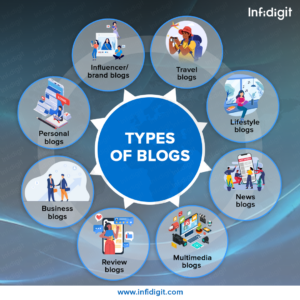
1. Personal Blogs
When blogs became mainstream, they were synonymous with personal journaling or blogging. While various blogging styles emerged later, personal blogs remain one of the most popular forms of blogging.
As the term suggests, a personal blog is an online platform where individuals share their thoughts, experiences, opinions, and insights on a variety of topics that interest them. Unlike professional or business blogs, a personal blog focuses more on the writer’s personality, views, and personal stories.
It can cover anything from hobbies, travel, and lifestyle to more niche topics. Personal blogs often allow for greater freedom of expression and are less formal than other types of blogs. They are typically updated regularly and encourage reader interaction through comments, fostering a community around shared interests and ideas.
2. Business Blogs
Business or company blogs are run by businesses or companies to communicate with their customers, attract prospective customers, and generate viable leads. These blogs are in sync with the core USP, product, service, or offerings of the business.
Businesses use blogs to inform their clientele, partners, and stakeholders about upcoming product launches, projects, press releases, and other details. Almost all businesses and companies have a digital presence without which they would not be able to gain visibility and move ahead of their competitors.
3. Review Blogs
Review blogs, also known as affiliate blogs, evaluate and provide detailed assessments of products or services within a specific niche or broader market category. These blogs help prospective buyers by offering insights into the product’s pros and cons, pricing, and overall value. They also provide a final verdict on whether the product is worth purchasing.
Building a successful review blog takes time, as earning the trust of readers requires patience and expertise. It’s important for review blogs to consistently offer honest, well-researched opinions to gain credibility with their audience.
4. Multimedia Blogs
Multimedia blogs have gained significant popularity in recent years, thanks to the growing demand for visual content. While they follow the same basic structure as traditional blogs, multimedia blogs primarily feature audiovisual content like vlogs, podcasts, videos, and images, accompanied by short text summaries that provide context for the audience. These blogs often include a table of contents, as well as various widgets and icons to enhance user experience and navigation.
5. News Blogs
News blogs focus on the latest happenings and recent global trends relating to various industries or even diverse topics. The purpose of a news blog is to keep the reader informed of what is going on in a specific field or industry. News blogs are objective instead of subjective and rarely include the perspective or opinion of the writer.
6. Lifestyle Blogs
Lifestyle blogs are increasing in popularity by the day and are gaining immense followers. These blogs touch on a range of lifestyle-related topics around the central theme of improving the quality of life.
Most lifestyle blogs include discussions around health, nutrition, fitness and exercise, social life, career, productivity, passion, hobbies, holistic wellness, and anything else that gives readers practical and actionable tips on improving their lifestyle.
7. Influencer/ Brand Blogs
Influencer or brand blogs are a new category of blogs and are a cross between personal and professional business blogging. Usually, an individual starts and runs these blogs by picking a niche and creating content specific to it.
Once the blog gets traction, it becomes a well-recognized personal brand that is in a position to make money through brand collaborations, advertising, marketing, and partnerships with other established labels or individuals. These blog types require consistent content creation, a strong business strategy, and regular analysis of upcoming trends.
8. Travel Blogs
Travel blogs contain information about traveling. Travel blogging requires a lot of work as the target audience, which comprises travelers and tourists, spends dedicated time and research on finding the best destinations and travel deals.
Apart from destinations, travel blogs cover culture, cuisines, itineraries, best spots, and the best packages or travel deals. Creating a travel blog takes time as you are required to create content with in-depth research and accurate information.
What is a Blog Post and How Does It Differ from a Blog?
A blog post is an individual article published on a blog, designed to focus on a specific topic or idea. It can include a mix of text, images, videos, infographics, or other multimedia to engage and inform readers. Blog posts are typically organized in reverse chronological order, ensuring the newest content is always displayed first.
A blog, on the other hand, is the platform or website where these posts are hosted. It serves as a repository for all blog posts, often organized by categories or tags for easy navigation. While a blog represents the overarching space for content, each blog post is a standalone entry created to connect with audiences and share insights on various subjects.
What is Blogging? Why is Blogging Popular Today?
Blogging is a method of sharing relevant and up-to-date information about a specific topic or cluster of topics with a widespread audience. Almost 570 to 600 million blogs are circulating on the internet, and the number only increases every day. Blogging is getting more and more popular by the day because it can:
- Increase visibility on search engines
- Provide valuable insights on niche topics
- Drive traffic through SEO strategies
- Attract new visitors
- Foster customer engagement and retention
- Generate a steady income stream
Why do you Need Blogs? How Blogs Benefit Companies
So, the question that now arises is why are blogs important for SEO and businesses.
If you’re a self-employed professional, business owner, or company leader looking to expand your reach and attract potential clients, having a blog is essential. In today’s digital world, offline communication methods are nearly obsolete. To build your brand and showcase your expertise, an active online presence is crucial.
A blog is an effective way to help your target audience find you and convert them into leads. Most people use search engines to find solutions, whether it’s for a product, service, or information they need.
Blogging helps ensure your business or ideas gain visibility, especially for e-commerce companies. Without it, you risk being invisible to millions of potential customers. Blogging is key to staying relevant, generating organic leads, and driving income.
How to Start a Blog in 10 Steps
Step 1: Choose your target audience
The first step in starting a blog is understanding who will make up your target audience. Your target audience will be those people who resonate with your blog, align with the ideas and facts that make up the blog posts, and find your products or services useful.
Ask yourself questions like, Who are you creating the blog for? Who should read them? That way, you will discover your niche and the topics you want to cover for that niche audience. For instance, if you are starting a financial blog, your target audience would be people looking for inputs on money management, insurance, and investments.
Step 2: Brainstorm new content ideas
A crucial part of running a successful blog is maintaining its freshness quotient. For your blog to stay relevant on search engines, you must come up with original, unique, and well-researched content regularly. While you can decide the timeline for posting content, you have to ensure you are consistent and stick to the schedule.
The ideal timeline for posting new content is once a day, or at least once a week, especially if you are an up-and-coming brand with little to no audience. The content you come up with must also be of high quality, SEO-approved, and interesting to your readers.
Step 3: Research on Content Management Systems (CMS)
Content management systems (CMS) are software tools that help design, manage, and publish blog posts and other content for your blog site. Without a CMS, you will not be able to publish and update your blog content.
You will also have to take care of the technical aspects yourself, which includes writing a static HTML file and uploading it to your server. Using a CMS helps you upload your content directly and integrate it with your blog or website.
Various CMS software are available but WordPress is one of the most popular CMS tools as it is easy to use and free. Joomla, Drupal, Magneto, and Sitecore, among plenty of others, follow WordPress.
Step 4: Create a Content Strategy
No endeavor ever works without a strong and adaptable content strategy in place. The same goes for blogging. If you blog without a specific aim in mind and post unrelated content, it can be hard to unlock the benefits of blogs. Your blogging strategy should have answers to these questions:
- Which part of the audience is the niche for my offering and what type of content will I produce and curate for them?
- Do my blog posts meet my target audience’s needs?
- What content, content pool/ reserve, research sources, editorial tools, and tracking tools will I use?
- What is the timeline for posting and scheduling posts?
- Where will I promote my content, the brands I want to target for collaboration, and the like?
Step 5: Write Engaging Blog Posts
When it comes down to it, how you write a blog is crucial in ensuring its success and visibility. Pay close attention to the structure of your blog. While each blog is different, there is a standard blog structure that authors use that is already well-received by blog readers.
When writing your blog posts, pay due attention to the article structure. Your blog should start with an attention-grabbing, yet meaningful, header or title. It should have plenty of subheads, bullet points, tables, images, and other broken-down content to make the blog post easy to read and digest. It should also have an inviting call-to-action (CTA). A CTA nudges readers to engage further with your blog and ultimately generates viable leads.
Step 6: Promote Your Blogs
It would not matter how valuable your content is if no one ever finds or reads it. Once you get done with the content creation bit, it is vital to ensure that your target audience finds your blog posts. Here is where promotion and marketing come into play. You can promote your blog posts through:
- Mentioning it on various digital platforms, including Facebook, Instagram, WhatsApp, and Twitter
- Sending out emails and daily/ weekly/ monthly newsletters
- Inviting guests to write posts or linking to other websites
- Partnering with an influential personality or brand
- Advertising or pay-per-click adverts
- Offering incentives for customer participation and promotion
Step 7: Conduct SEO
Why blogs are important for SEO, you ask? Well, as your blog post will get displayed on search engines (especially Google), it is important to conduct thorough search engine optimization (SEO) to push up your search ranking.
You have to conduct SEO from time to time to get actual results and drive organic traffic to your blog page. You can carry out SEO by researching keywords relevant to your field or niche industry, doing competitor analysis, doing internal and external linking, and using user-friendly URLs and meta tags, among other steps. You should also optimize your user interface and optimize your blog to be lag-free for boosting user experience.
Step 8: Use Different Blog Styles
When we say use variation, we mean to try and write your blog posts in various styles and patterns. This does not mean you stray away from your niche and dabble in topics beyond your expertise. It only means that you have to try various combinations of blogging structures and styles to keep up user experience and interest.
For instance, one day you can have a how-to blog post, and the other day a listicle blog post. Or you can have a multimedia blog post, share personal stories, publish interviews, or have a guest blogger write for you.
Step 9: Repurpose Old Content
Repurposing is not just for clothes and materialistic items. You can repurpose and reuse your digital content as long as you remodel it in a way that has a fresh and relevant feel to it. As brainstorming and coming up with 100% authentic and interesting blog content is hard and requires consistency, you can reinvent your old content.
Doing this can save you time and beat those writer’s blocks if the need arises. For instance, you can convert a video or audio content of yours into an article or vice versa. In case repurposing content is not an option, you can invite a group of bloggers to come up with fresh content and run your blog in your absence.
Step 10: Keep an Eye on Competitors
A little healthy competition never hurt anyone. Some of the biggest successes in the world have looked up to their peers and competitors for inspiration. Why should blogging be any different? Looking at what your competitors are up to can help you identify industry trends, understand your audience, develop a foolproof strategy, and fix the shortcomings in your content.
It can also give you many ideas on relevant topics, mutually beneficial collaboration and promotion, and ways to promote your blog. More than anything, it will keep you on your toes and have you learning and growing every day.
Significance of Having a Blog
There are many benefits to having a blog. A blog can:
- Help your company, business, or personal brand rank higher than competitors and achieve top search engine rankings, especially when paired with effective SEO strategies.
- Allow you to share valuable information on a specific topic, building your reputation as an industry expert over time.
- Drive organic traffic to your site, converting visitors into leads and generating consistent revenue, while keeping current customers engaged.
- Cultivate an online community, helping you understand your audience’s needs and build stronger connections.
- Establish trust and credibility with customers, partners, and stakeholders.
- Boost your reputation and goodwill within the industry.
- Enhance user experience and overall customer satisfaction.
Blogging Best Practices for 2025
-
High-Quality Content Creation
To fully unlock the benefits of blogging, it’s essential to consistently create and publish high-quality posts. Your content should be authentic, plagiarism-free, impactful, and trustworthy while highlighting your expertise in the field.
Keep it simple and easy to understand, as most readers avoid complex, verbose, or overly lengthy language. Regularly optimize your posts with SEO, and make sure your headline is compelling. Studies show that 80% of readers will click on an article or blog post if the headline grabs their attention.
-
Active Reader Engagement
A reliable marker of a successful blog is active reader engagement. Reader engagement is any action taken by the person who visits your blog that indicates that they have interacted with your content.
For instance, if they read an article from start to finish, leave comments on your posts, click on the CTA, share the blog post on their social media profile, generate an active lead, or make a purchase it will qualify as an indicator of active reader engagement. Different blog/ Web applications will provide insight through varying modes.
-
Improving User Experience
To run a successful blog for the long term, it is of utmost importance that your users have a smooth user experience and a smoother user interface to navigate. While you ensure that your blog layout is aesthetic with the right typography, fonts, and colour schemes, ensure that your Web design is simple, consistent, and easy to navigate.
Optimize your blog to be as user-friendly as possible. For instance, take care of factors like load time, mobile friendliness, and functionality. Get rid of unnecessary components that clutter your blog layout. Your blog has to be user-friendly so it generates a positive user experience.
Wikipedia vs Blog: What is the difference between Wikipedia and a blog?
Wikipedia and blogs serve different purposes and have distinct characteristics. Wikipedia is a free, user-contributed online encyclopedia that aims to provide factual, neutral, and verifiable information on a wide range of topics. It follows a strict editorial process and relies on credible sources.
A blog, on the other hand, is an online platform for individuals, businesses, or organizations to share opinions, experiences, and insights on specific topics. Blogs are often informal, personal, and flexible in terms of content and style, with a focus on engagement and interaction with readers.
While Wikipedia prioritizes accuracy and neutrality, blogs emphasize personal expression and dynamic content. Both are valuable online tools but serve different needs.
Who is a Blogger? Defining the Role and Responsibilities
A blogger is someone who creates and publishes content on a blog, typically focusing on a specific niche or topic. Bloggers share their knowledge, experiences, and opinions through written articles, videos, images, or a combination of these formats.
The role of a blogger involves researching topics, writing engaging content, optimizing posts for SEO, and promoting their work to reach a broader audience. Bloggers are also responsible for interacting with their readers, responding to comments, and building a community around their content. In many cases, bloggers may monetize their platforms through ads, sponsored posts, affiliate marketing, or product sales, making it both a creative and business-driven role.
Conclusion: Why Blogs Matter in Today’s Digital World
In today’s digital world, blogs are essential for building an online presence, engaging audiences, and driving traffic. They allow businesses and individuals to share valuable content, establish authority, and improve SEO. Regular blogging helps foster trust with readers, build communities, and generate leads.
Blogs should be utilized as important complementary spaces for businesses and individuals to engage with their audiences regularly. While they may have some minor drawbacks, blogs can be a vital medium for monetizing content. Many businesses already leverage blogs to optimize their resources and offer valuable insights to their customers. In short, blogs provide a platform for communication, connection, and growth in an increasingly digital landscape.
FAQ: Common Questions About Blogging
What is a blog in simple words?
A blog is a regularly updated website or online platform where an individual, group, or organization shares their thoughts, information, or experiences in the form of articles, posts, or entries known as blog posts.
What is the primary purpose of a blog?
Blogs serve various purposes, such as sharing knowledge, expressing opinions, promoting products or services, building an online presence, and connecting with an audience interested in a specific topic.
How do blogs differ from traditional websites?
Blogs are dynamic and frequently updated with new content, while traditional websites often have static pages. Blogs are usually organized chronologically, with the most recent content appearing first.
Who can start a blog?
Anyone can start a blog, whether it’s an individual with a personal passion, a business looking to connect with customers, or an organization sharing news and updates. The accessibility of blogging platforms has made it easy for anyone to get started.
What are the key elements of a successful blog?
Successful blogs typically have high-quality content, a consistent posting schedule, engaging visuals, a clear niche or target audience, effective promotion, and reader interaction through comments and social media.
How do I write a blog?
To write a blog, follow these steps:
- Choose a Topic: Select a subject that interests your audience and aligns with your blog’s focus.
- Research: Gather information, data, and insights to make your content informative and valuable.
- Create an Outline: Organize your ideas into a clear structure with an introduction, body, and conclusion.
- Write the Post: Start with an engaging introduction, followed by well-organized content. Use a conversational tone, short paragraphs, and bullet points for easy reading.
- Optimize for SEO: Include relevant keywords, add internal and external links, and ensure readability.
- Edit and Proofread: Check for grammar, spelling, and flow.
- Publish and Promote: Share your blog on social media or email newsletters to reach a wider audience.
What are the types of blogs?
There are several types of blogs, including:
- Personal Blogs – Focus on personal experiences and interests.
- Business Blogs – Used by companies to promote products and engage customers.
- Review Blogs – Provide assessments of products or services.
- Multimedia Blogs – Feature videos, podcasts, images, and other visual content.
- News Blogs – Offer updates and analysis on current events.
- Lifestyle Blogs – Cover topics like health, fashion, and daily life.
- Influencer/Brand Blogs – Managed by influencers or brands to promote their image and products.
- Travel Blogs – Share travel experiences, tips, and recommendations.
Why is it important to post to a blog regularly?
Posting regularly to a blog is important for maintaining audience engagement, improving SEO, and building authority. It keeps content fresh, boosts search engine rankings, and helps establish trust with readers, leading to more traffic and conversions.
Popular Searches
How useful was this post?
4.1 / 5. 26










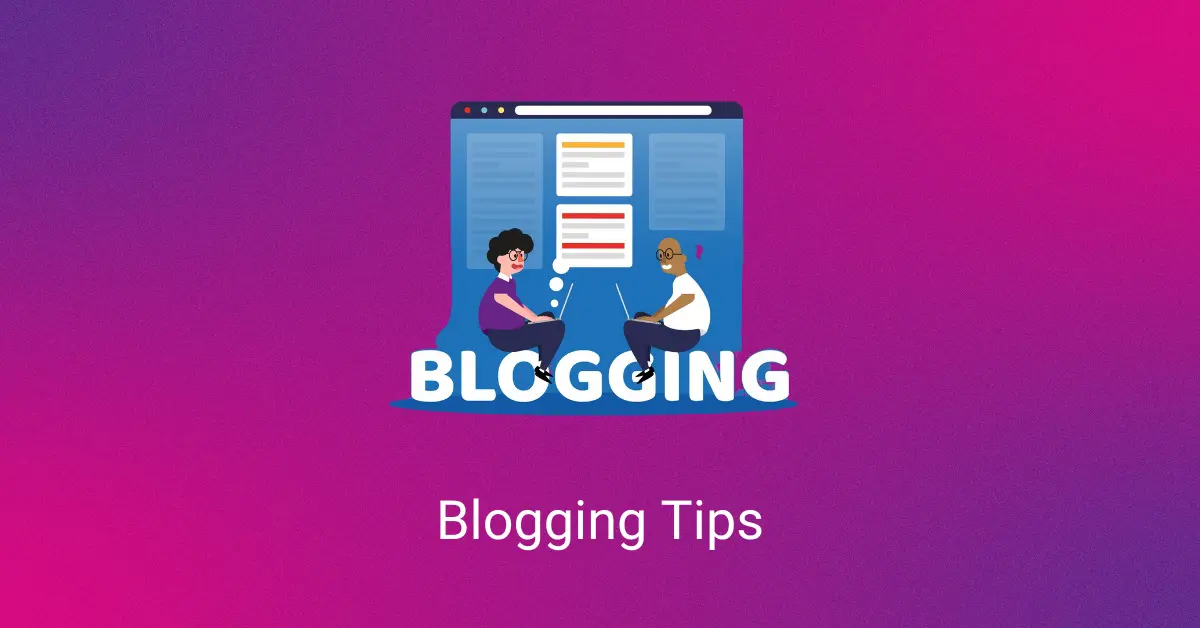

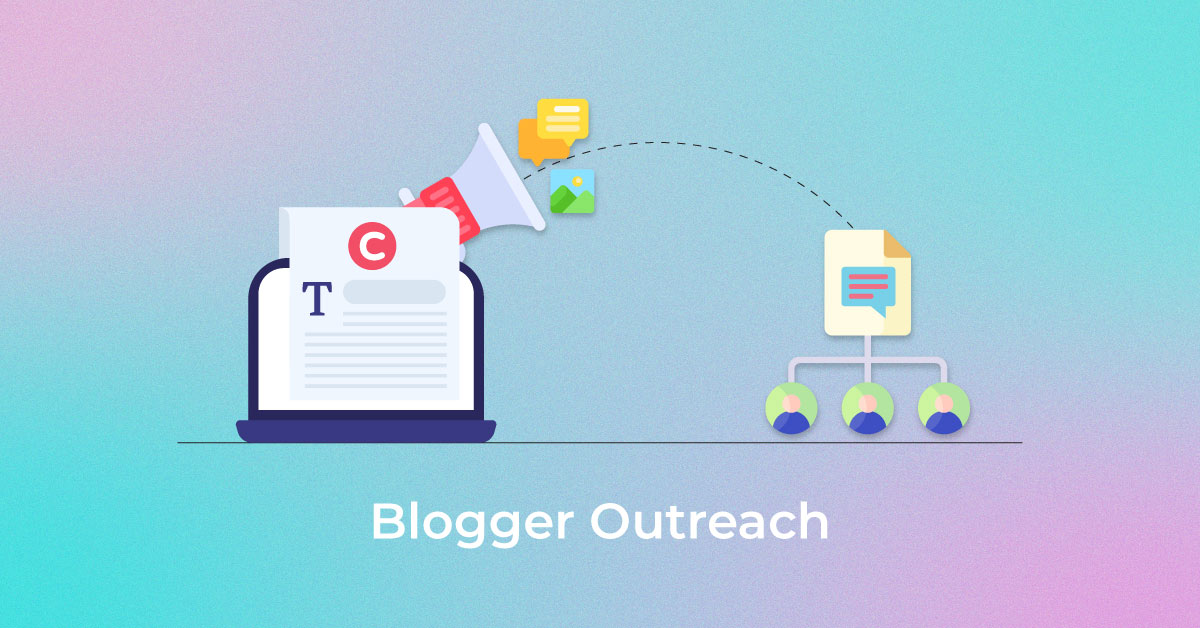
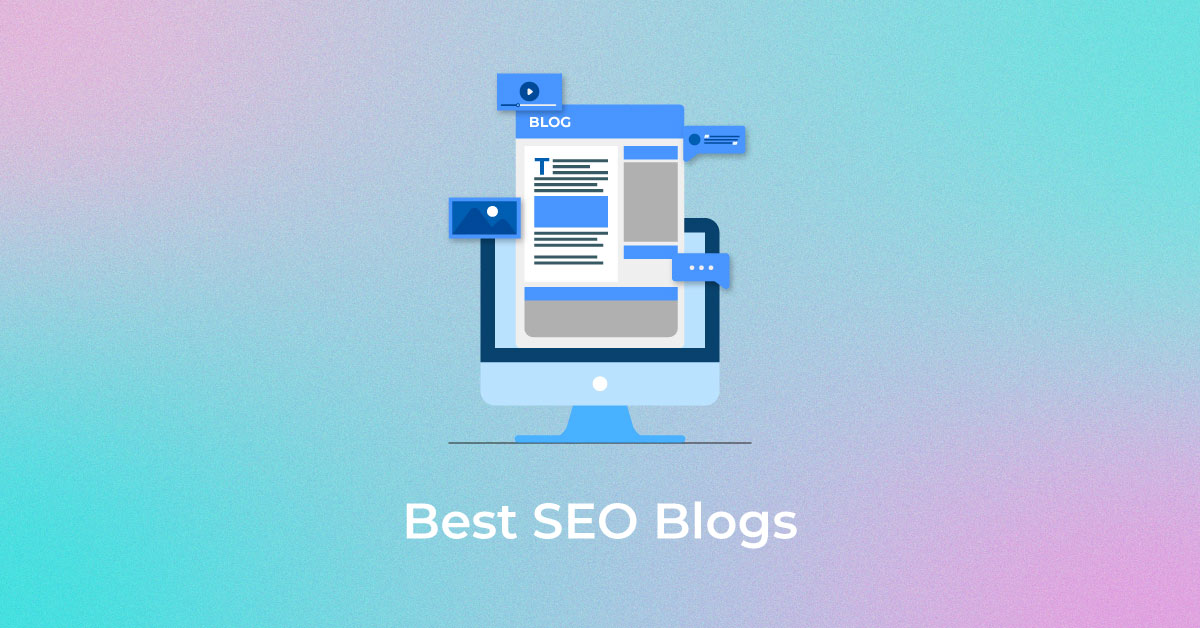
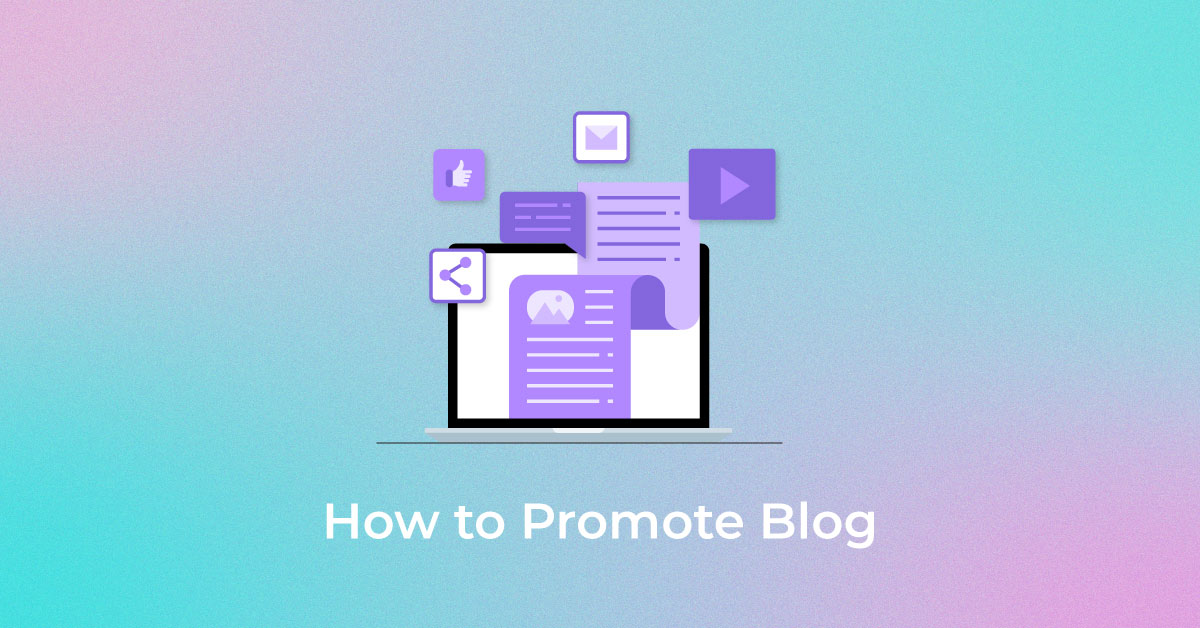


3 thoughts on “What is a Blog and Why Blogs are Important”
Thanks for the information. That was quite an insight for a beginner.
Thanks for the great information.
Thanks. Read our latest posts for more updates.